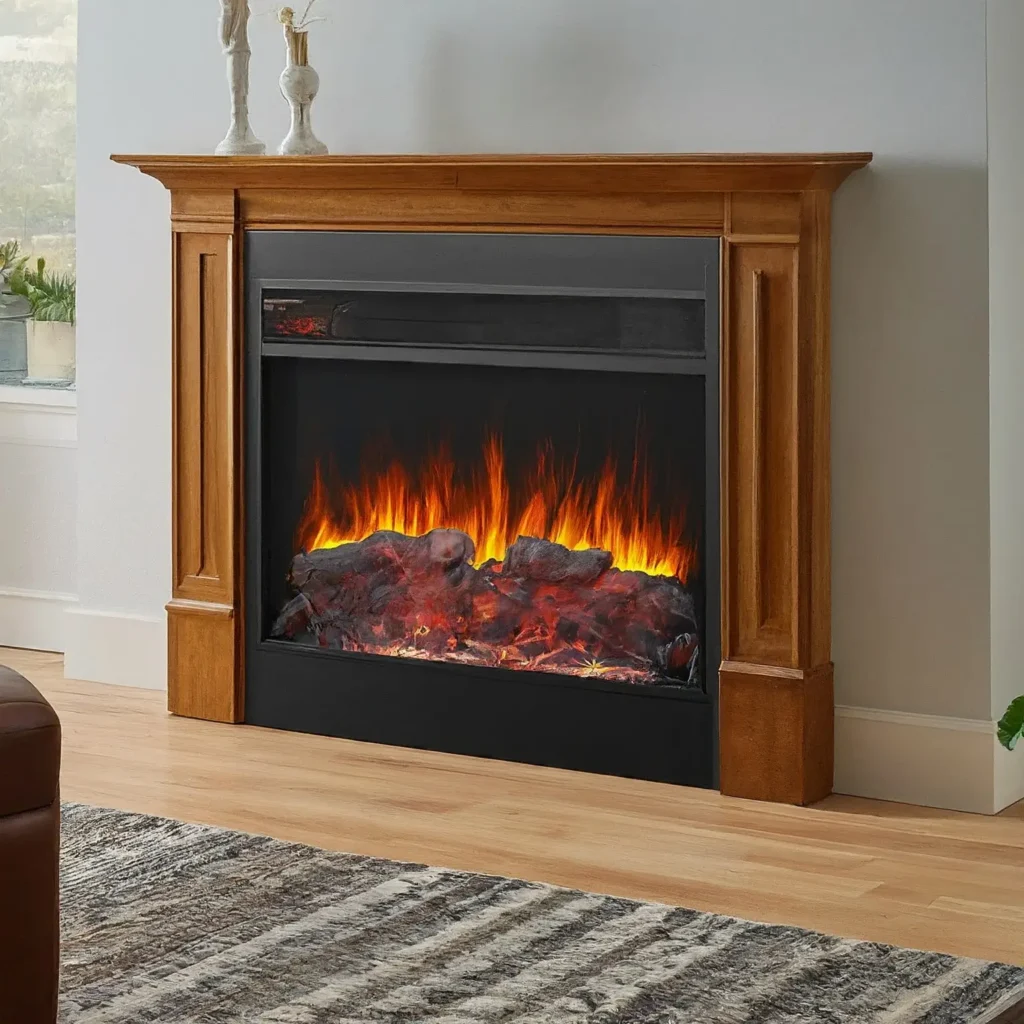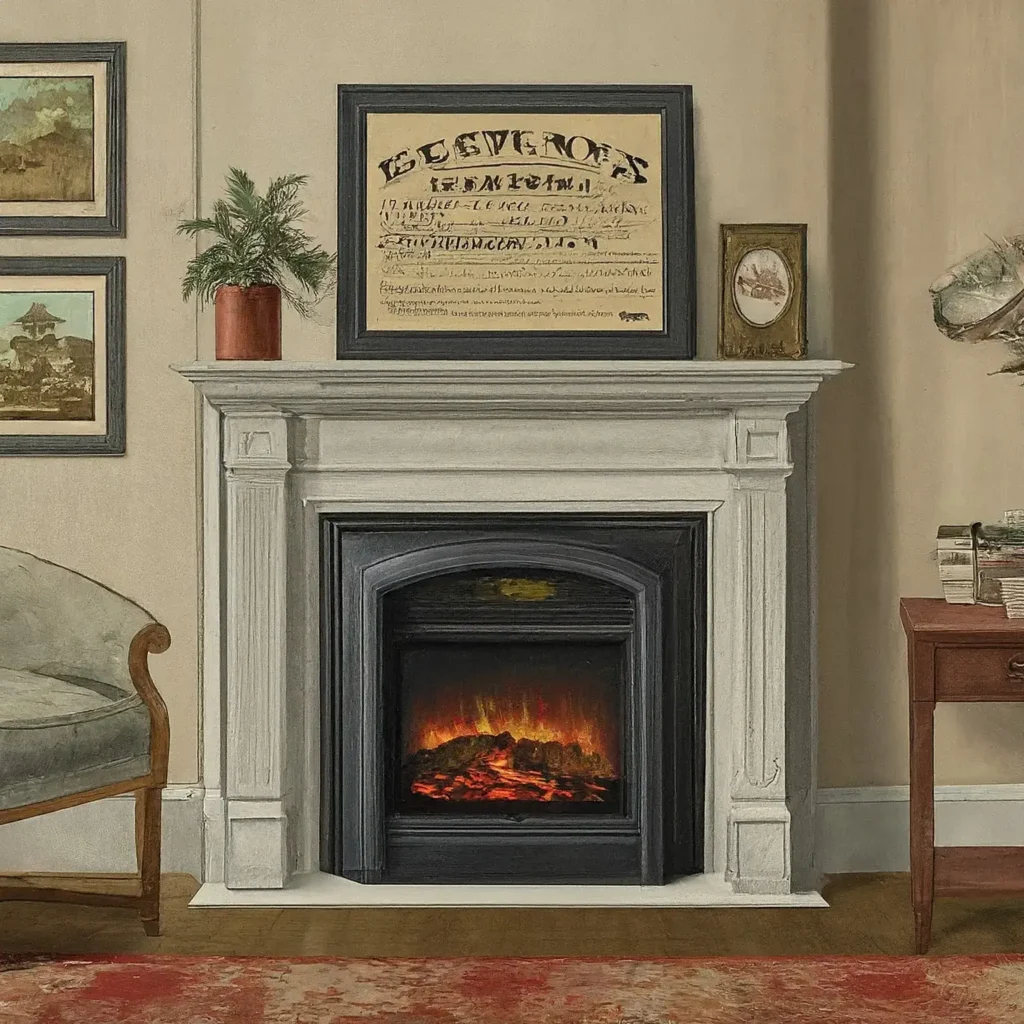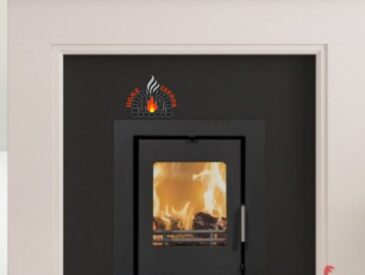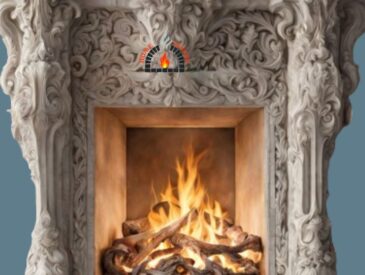BTUs serve as a standard unit of measurement for energy output across various appliances, including electric fireplaces. This rating provides valuable insight into the fireplace’s potential to effectively heat a space.
A conventional 120-volt outlet electric fireplace typically generates around 5000 BTUs, capable of warming an area of approximately 450 square feet.
On the other hand, a built-in electric fireplace often hard-wired for 240 volts, can produce up to 9000 BTUs, making it suitable for larger spaces.

Benefits of Electric Fireplaces
In addition to their heating capabilities, electric fireplaces add a charming ambiance to any home. They serve as excellent sources of supplemental heat,
requiring significantly less maintenance compared to traditional wood or coal-burning fireplaces. Moreover, they offer enhanced safety features.
Understanding BTU Output in Electric Fireplaces
A standard plug-in electric fireplace typically emits around 5000 BTUs, providing ample warmth for a cozy ambiance. However, different types of electric fireplaces offer varying BTU levels:
- Infrared electric fireplaces step it up a notch, offering 5500 BTUs for enhanced heating efficiency.
- Built-in, hard-wired electric fireplaces lead the pack, boasting an impressive 9000 BTUs. These units operate on 240 volts, doubling the power of a standard outlet.
Unpacking BTUs: A Measure of Heat
Understanding BTUs is key to gauging a fireplace’s heating capability. One BTU represents the energy required to raise one pound of water by one degree in an hour. Put simply, the higher the BTU, the greater the heat output.
Fine-Tuning Your Fireplace Choice
While most electric fireplaces hover around the 5000 BTU mark, slight variations do exist. However, these differences have minimal impact on heat output. Factors like internal fans or infrared heat contribute to overall warmth.
More Than Just Heat
It’s worth noting that electric fireplaces aren’t solely functional for their heat. They also serve as captivating additions to your space, enhancing its ambiance. Many models even offer settings that allow you to enjoy the visual appeal of a fire without activating the heat function.
Can an electric fireplace effectively heat a room?
A standard electric fireplace, conveniently plugged into a regular outlet, emits around 5000 BTUs of heat. This output is typically sufficient to warm up a room, making electric fireplaces reliable heating units.
Room Size Matters
Consider the square footage of your room when determining if an electric fireplace is the right choice. Most models are designed to effectively heat spaces ranging from 200 to 450 square feet.
To ensure even heat distribution, opt for an electric fireplace equipped with a blower or fan. This feature disperses warmth beyond the unit, maintaining a cozy atmosphere after the fireplace is turned off.
Infrared Electric Fireplaces: Extended Reach
Infrared electric fireplaces can heat up to 1,000 square feet of space. Unlike standard models, they utilize infrared technology to radiate heat directly into the room. This method bypasses heating the air, meaning the room won’t retain warmth as long as the unit is turned off.
Advantages of Infrared Models
- Quieter Operation: Infrared fireplaces don’t rely on fans for heating, ensuring a peaceful ambiance.
- Faster Warmth: Experience quicker heat dispersion as warmth radiates directly from the unit.
Calculating the Operating Cost of Your Electric Fireplace
According to the US Energy Information Administration (EIA), the average residential electricity rate is 13.99 cents per kilowatt-hour (kWh). For electric fireplaces, the average consumption is around 1.5 kilowatts per hour, which translates to a cost of approximately $0.21 per hour. If you run it continuously for 8 hours, the cost would be $1.68.

The Formula at Play
To determine the kWh consumption, you can use the formula:
[kWh = \dfrac{(watts \times hours)}{1000}]
This formula is used because a kilowatt-hour is equivalent to 1000 watts of power over one hour. Let’s apply this to a standard electric fireplace unit with a 1500-watt consumption.
Example Scenario
Assuming you run the unit for two hours after a long day at work:
1. Multiply the wattage (1500 watts) by the hours (2): 1500 x 2 = 3000.
2. Divide by 1000 to get the kWh: 3000 / 1000 = 3 kWh.
3. Multiply by the average residential electricity rate (13.99 cents per kWh): 3 x $0.1399 = $0.4197.
So, running your unit for two hours would cost approximately $0.42.
Understanding these calculations helps you manage your energy consumption and make informed decisions about using your electric fireplace. For more tips and insights, stay tuned with Homedekkor!
At Homedekkor, we prioritize your safety and comfort. Let’s delve into the question: Are electric fireplaces dangerous?
Understanding Electric Fireplace Safety
An electric fireplace, on its own, poses minimal danger. However, certain user oversights can potentially create hazards. One key consideration is ensuring that a 240-volt fireplace is not mistakenly plugged into a 120-volt outlet.
Additionally, it’s important to note that the area where heat emanates can become quite hot and may pose a risk to small children if left unattended.
Related: electric fireplace safety
Comparative Safety: Electric vs. Wood-Burning Fireplaces
When weighing the safety factors, electric fireplaces present distinct advantages over their wood-burning counterparts:
1. Reduced Maintenance: Unlike wood-burning fireplaces requiring regular cleaning, electric units eliminate the risk of neglected maintenance.
2. No Live Flame: Embers and sparks, common with wood-burning fireplaces, are absent in electric units, minimizing potential fire hazards. This is particularly crucial for households with young children.
Additional Benefits of Electric Fireplaces
Beyond safety, electric fireplaces offer a host of other advantages over traditional wood-burning options, including:
1. Zero Cleaning Effort: With no ash to contend with, electric fireplaces eliminate the need for regular cleanouts.
Related: clearance around the gas fireplace
2. Ease of Operation: No chopping wood or lighting fires—simply press a button to ignite the flames.

3. Minimal Maintenance: Say goodbye to chimney sweeps and inspections, as electric fireplaces require no such upkeep.
4. Portability: Freestanding electric fireplaces offer the flexibility to be moved to different locations in your home, providing instant ambiance wherever you desire.
At Homedekkor, we prioritize both safety and convenience in helping you create the perfect ambiance in your living space. Explore our range of electric fireplaces and elevate your home’s comfort today!





